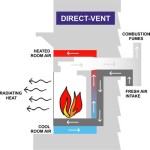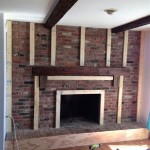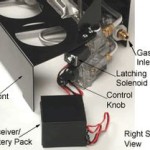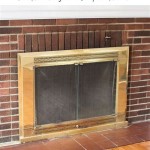Gas Logs For Fireplace: A Comprehensive Guide
Gas logs offer a convenient and aesthetically pleasing alternative to traditional wood-burning fireplaces. They provide the visual appeal of a real fire without the associated mess, effort, and environmental concerns. This article delves into the various aspects of gas logs, exploring their types, benefits, installation considerations, and maintenance requirements, providing a comprehensive understanding for homeowners considering this option.
The fundamental premise of gas logs involves ceramic or refractory logs that are strategically arranged within a fireplace and connected to a gas line. When ignited, the gas flame dances around and through these logs, creating a realistic fire simulation. The design and materials used in manufacturing gas logs aim to emulate the appearance of natural wood, with some sets even incorporating features like glowing embers and realistic bark textures.
The choice between gas logs and a traditional wood-burning fireplace involves a trade-off between authenticity and convenience. While wood-burning fireplaces offer the undeniable aroma and crackling sound of a natural fire, they also require constant tending, produce smoke and ash, and necessitate a reliable source of seasoned firewood. Gas logs, on the other hand, offer a consistent flame, require minimal maintenance, and eliminate the need for wood storage.
Types of Gas Logs: Vented vs. Ventless
A crucial distinction exists between vented and ventless gas logs, each operating on different principles and requiring specific fireplace configurations. Understanding these differences is paramount before making a purchase.
Vented gas logs are designed to be used in a fully functional, open-damper fireplace. These logs produce a more realistic flame appearance, as they require a significant amount of oxygen for combustion. The open damper allows the combustion byproducts, including carbon monoxide, to be safely vented up the chimney. Vented gas logs typically generate less radiant heat compared to ventless options, as a substantial portion of the heat escapes through the chimney. The realistic flame, however, remains a primary draw for many homeowners.
The installation of vented gas logs is generally simpler, as it primarily involves connecting the gas line and arranging the logs according to the manufacturer's instructions. However, the requirement for a fully functional chimney is a crucial factor to consider. If the chimney is damaged or obstructed, it must be repaired before installing vented gas logs to ensure safe operation.
Ventless gas logs, also known as vent-free gas logs, are designed to operate with the fireplace damper closed. These logs are engineered to burn more efficiently, producing very little carbon monoxide. They are equipped with an Oxygen Depletion Sensor (ODS), which automatically shuts off the gas supply if the oxygen level in the room drops to an unsafe level. Ventless gas logs are designed to radiate heat directly into the room, making them a more efficient heating source than vented logs.
The appeal of ventless gas logs lies in their heat efficiency and the ability to use them in fireplaces that may not have a fully functional chimney. However, ventless logs are not without their drawbacks. The flame appearance is often considered less realistic than that of vented logs, and they can produce a slight odor, particularly when first ignited. Furthermore, some individuals may be sensitive to the combustion byproducts, even at safe levels. Proper room ventilation is still recommended when using ventless gas logs.
Choosing between vented and ventless gas logs depends on individual priorities and the existing fireplace configuration. If flame realism is paramount and the chimney is in good working order, vented logs are a suitable choice. If heat efficiency and the ability to use a fireplace with a compromised chimney are the primary concerns, ventless logs may be a more appropriate option. A qualified HVAC professional can assess the fireplace and provide guidance on the best type of gas log for a specific situation.
Installation Considerations and Safety
Installing gas logs involves working with natural gas or propane, which presents inherent safety risks. It is highly recommended to hire a qualified and licensed gas technician for the installation process. Attempting to install gas logs without proper training and experience can lead to gas leaks, explosions, and carbon monoxide poisoning.
Gas Line Connection: The gas line connection is a critical aspect of the installation process. The technician will ensure that the gas line is properly sized and connected to the gas log set. A shut-off valve should be installed near the fireplace to allow for easy disconnection and maintenance. The connections must be leak-tested using a gas leak detection solution to ensure that there are no leaks.
Log Placement: The proper placement of the logs is essential for both safety and aesthetics. The logs should be arranged according to the manufacturer's instructions, ensuring that they do not block the burner ports or interfere with the flame pattern. Incorrect log placement can lead to incomplete combustion and the production of carbon monoxide.
Carbon Monoxide Detectors: Regardless of whether vented or ventless gas logs are installed, it is crucial to have working carbon monoxide detectors in the home. These detectors provide an early warning in the event of a carbon monoxide leak, allowing occupants to evacuate the premises safely. Carbon monoxide detectors should be installed on every level of the home, particularly near sleeping areas.
Permits and Inspections: In many jurisdictions, a permit is required for gas line modifications and appliance installations. It is important to check with the local building department to determine the permit requirements and schedule an inspection after the installation is complete. The inspection ensures that the gas log set has been installed correctly and that it meets all applicable safety codes.
Pilot Light Safety: Gas logs typically have a pilot light that provides a continuous flame for ignition. It is important to understand how to light and extinguish the pilot light safely. The manufacturer's instructions should be consulted for specific guidance on pilot light operation. If the pilot light goes out frequently, it may indicate a problem with the gas supply or the gas log set itself, requiring professional service.
Maintenance and Care of Gas Logs
While gas logs require significantly less maintenance than wood-burning fireplaces, some routine care is necessary to ensure optimal performance and longevity.
Cleaning: Over time, gas logs can accumulate dust and soot, which can affect their appearance and performance. The logs should be cleaned periodically using a soft brush or vacuum cleaner attachment. Harsh chemicals or abrasive cleaners should be avoided, as they can damage the ceramic or refractory material. The burner assembly should also be cleaned to remove any debris that may be blocking the burner ports.
Inspection: The gas log set should be inspected regularly for any signs of damage or wear. Cracks, chips, or discoloration can indicate that the logs are nearing the end of their lifespan and may need to be replaced. The gas lines and connections should also be inspected for leaks or corrosion. Any issues should be addressed promptly by a qualified gas technician.
Pilot Light Maintenance: The pilot light should be inspected regularly to ensure that it is burning cleanly and consistently. A yellow or flickering pilot light may indicate a problem with the gas supply or the pilot light assembly. The pilot light orifice may need to be cleaned to remove any debris that is obstructing the gas flow. A qualified gas technician can perform this maintenance.
Professional Service: It is recommended to have gas logs professionally serviced at least once a year. A qualified gas technician can inspect the gas lines, burner assembly, and logs to ensure that they are in good working order. They can also perform any necessary repairs or adjustments to optimize performance and safety. Professional service helps to prevent potential problems and extend the lifespan of the gas log set.
Log Arrangement: Over time, the logs may shift or become misaligned. Periodically, the logs should be rearranged according to the manufacturer's instructions to ensure that they are properly positioned for optimal flame appearance and safety. Incorrect log placement can lead to incomplete combustion and the production of carbon monoxide.
By understanding the different types of gas logs, following proper installation procedures, and performing routine maintenance, homeowners can enjoy the beauty and convenience of a gas fireplace safely and efficiently for many years. Regular inspections and prompt attention to any issues that arise will help to ensure the long-term performance and safety of the gas log system.

Napoleon Gl18e Vented Gas Log Set 18 Inch

Vented Gas Logs Heater Or Decorative Bart Fireside

Gas Log Set S Installation Vented Logs For Your Fireplace

American Gas Log Dundee Oak 30 In Vented Natural Fireplace Set With Complete Kit Manual Match Lit Do30hdmtch The Home Depot

Pleasant Hearth 18 Dual Fuel Wildwood Vent Free Gas Log Set 30 000 Bt

Napoleon Gl28 Reversible Vented Gas Log Set 28 Inch

How Do Gas Logs Work Hocon

Majestic Vdy Duzy Series Vented Gas Log Set

Napoleon Reversible Vented Gas Log Set Logs Stove Hearth Patio

Small Gas Logs Reduced Depth Vented And Ventless








